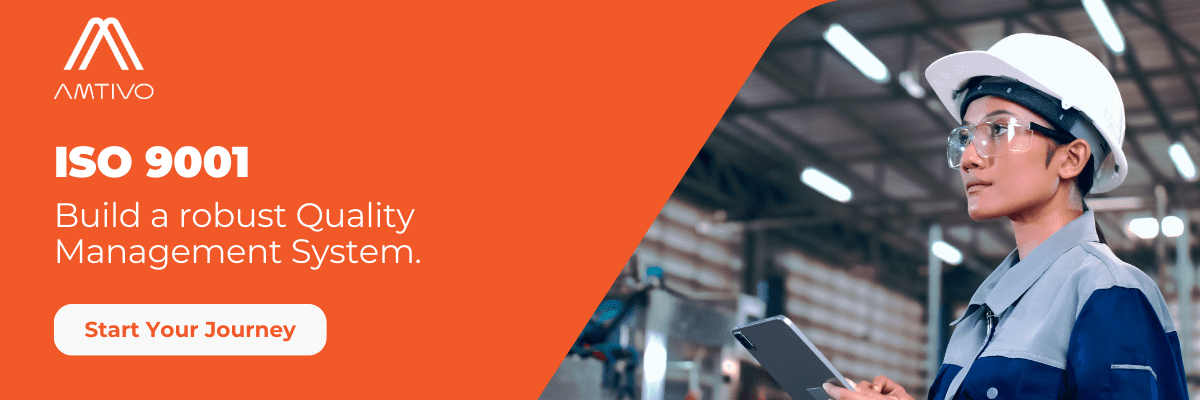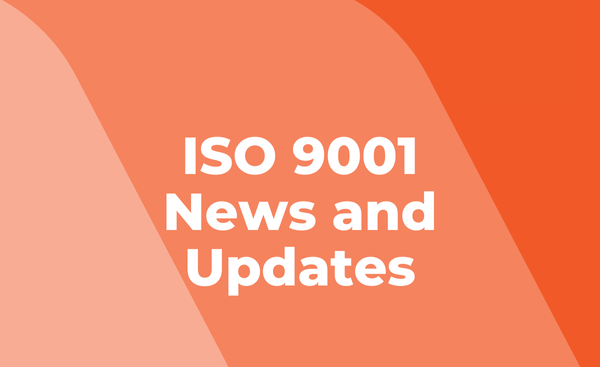Quality management should be a top priority for any organization, no matter what products or services they offer. Many organizations use an ISO 9001-certified Quality Management System (QMS) to help them maintain high quality through a systematic, data-driven approach.
Want to know if your QMS is compliant? Check out our ISO 9001 checklist below to learn about the path to certification in 10 easy steps.
What Are the Core Principles of ISO 9001?
ISO 9001 is a global standard that details the best way to establish and maintain a QMS, covering the following:
-
Leadership
-
Customer focus
-
Employee engagement
-
Process approaches
-
Data-based decision-making
-
Continual improvement
The standard offers a framework for organizations to improve processes and deliver consistent quality. Getting ISO 9001 compliant means creating a culture of continual improvement and documenting processes thoroughly, requiring commitment from everyone in the organization.
Ensuring your QMS is ISO 9001-compliant might seem overwhelming, but our checklist simplifies the process. It breaks down the standard’s requirements into easy-to-manage steps.
Not sure where to begin? Take our ISO 9001 Readiness Quiz to assess your organization’s preparedness and explore your next steps toward certification.
ISO 9001 Checklist – 10 Steps to Compliance
1. Understand the Requirements
Start by looking at the ISO 9001 standard to understand its principles and requirements.
You may wish to consider reading the official ISO 9001:2015 document to understand the standard’s key clauses and terminology.
You can also sign up for ISO 9001 training to help you understand the requirements.
2. Get Senior Management Support
Commitment from senior management is key to successfully certifying a QMS, as they provide the necessary resources and authority to drive the process.
Their support also reinforces the importance of quality management to the rest of the organization and a focus on continual improvement.
3. Build an Implementation Team
You’ll need to choose someone to lead the ISO 9001 implementation.
In a small business, this could be the owner or a key employee who takes on multiple tasks.
Larger businesses may need a dedicated team from different departments for a thorough approach to quality management.
Defining roles and responsibilities for implementation is essential for accountability, and regular meetings can help coordinate efforts during the process.
4. Conduct a Gap Analysis
A thorough gap analysis can be a clear starting point, helping you prioritize actions and allocate resources effectively.
Review your current Quality Management System (QMS) to find differences between your processes and ISO 9001 requirements.
This might mean reviewing documents, evaluating procedures, and talking to key staff. The aim is to spot areas that need improvement to meet the standards.
We offer a free checklist you can download and use to compare what you currently have in place against the requirements of ISO 9001.
5. Develop an Implementation Plan
If the gap analysis shows areas of non-compliance and opportunities for improvement, create a detailed plan to achieve ISO 9001 certification.
A well-structured plan acts as a roadmap, guiding your organization through the process while ensuring efficient resource use and timely execution.
It should include clear objectives, timelines, and the resources needed for each step. Set milestones to track progress and spot challenges.
Consider using project management tools to organize tasks and keep track of deadlines.
 |
6. Develop and Document Processes
Keeping records at every step is crucial for ISO standards like ISO 9001. Documentation should clearly explain each process, serving as a guide for employees to maintain standards and improve continuously.
7. Implement Processes
Roll out the documented changes in your QMS, checking that all employees understand and follow the processes. Anticipate and prevent any operational challenges, and address them if they arise.
Monitoring is key to managing compliance and effectiveness; without it, resources might be wasted and risks might be difficult to manage. Successful implementation means quality management becomes part of daily operations.
8. Train Your Employees
Employees are crucial for maintaining quality standards. Train them according to their roles in the QMS, helping them understand how their actions affect overall quality. Use various training methods, such as workshops, e-learning, and hands-on practice.
Well-informed, engaged employees are more likely to embrace the QMS, contributing to its success.
9. Conduct Internal Audits
Perform internal audits to check the QMS’s effectiveness and find areas for improvement. Use audit findings to make corrections, keeping your QMS aligned with ISO 9001 and encouraging ongoing improvement.
10. Find the Right Certification Body
Choose an accredited certification body to conduct the external audit of your QMS. Research to find the right certification body for your needs. ISO recommends using accredited bodies like ANAB.
The external audit verifies adherence to ISO 9001 and must be passed for certification. Successful certification shows your commitment to quality management and can give your business a competitive edge.
You can prepare for the audit by reviewing documentation, addressing nonconformities, and ensuring compliance.
Prepare for Your Certification Audit
When preparing for your certification audit, it’s crucial to be ready.
Here’s what to do:
-
Review Documentation—Ensure all documents are current, complete, and accurately describe your QMS.
-
Conduct a Final Internal Audit—Check for any oversights or weaknesses in your QMS.
-
Fix Last-Minute Issues—Resolve any problems or nonconformities before the audit.
-
Brief Employees—Ensure everyone knows what to expect during the audit and their role in providing evidence and answers.
-
Gather Evidence—Collect records that show your QMS is working effectively.
-
Contact Your Certification Body—Confirm audit dates and ensure you’re ready for any specific requirements from the external auditor.
An auditor from your certification body will perform the Stage 1 audit, the first step in getting ISO 9001 certified. They’ll identify any gaps in your Quality Management System that need fixing before moving forward.
Once these are addressed and the auditor is satisfied, the detailed Stage 2 assessment begins. Successful completion of this can lead to your ISO 9001 certification.
Get Your Free ISO 9001 Checklist
Download our free ISO 9001 checklist to get started.
Why You Should Choose Amtivo
Our team of experts will support you throughout your certification journey, ensuring your ISO certificate is globally recognized thanks to our ANAB accreditation.
Our US-based team tailors solutions to your needs, and our qualified, experienced auditors are experts in their field.
We offer transparent pricing with no hidden costs or fees and flexible contracts without long-term commitments.
With 94% of Amtivo clients likely to recommend us, we take pride in being open, honest, and approachable while working in partnership with our clients.
Get started on your ISO 9001 certification journey—get a quote today or contact our team to discuss your needs.











